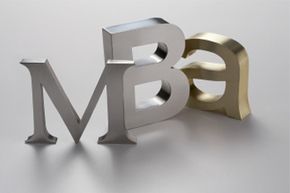The land of opportunity is also the land of entrepreneurship, the striving businessperson and, consequently, the business student. The United States leads the world with 661 business schools that are members of the Association to Advance Collegiate Schools of Business (AACSB International). France comes in second at 49 [source: AACSB]. At least 150,000 students earn MBAs in the United States each year [source: Boston Globe]. In 2009, 64.3 percent of U.S. MBA students were men; 35.7 percent were women.
But is an MBA worth the time, effort and expense? That depends on several factors, including whether you can handle the average cost of about $32,000 per year (many schools are more expensive) [source: Boston Globe]. It also depends on what the degree can do for your career prospects. When asked who was right for an MBA, Rose Martinelli, associate dean at the University of Chicago's Booth School of Business, told BusinessWeek, "everybody," because she considers the MBA a "generalist degree, meaning it's about learning how to manage people and resources" [source: Gloeckler]. Consequently, she and other educators advocate an MBA for anyone, from accountants to hedge fund managers to founders of nonprofit charities.
Advertisement
On the other hand, several small-scale studies have found that the value of an MBA, including the influence of highly ranked schools, is questionable, although most graduates report that they are happy with their degrees, even though their definitions of success vary widely [source: Ellin]. Many MBA programs collect data on the degree's aftermarket value in order to better promote their programs. For example, Harvard touts that, three months after graduation, the median base salary for a 2009 MBA recipient was $114,000. Further, 77 percent of students had accepted a job offer by graduation, and 87 percent accepted an offer within three months [source: Harvard Business School].
In this article, we'll cover all the bases of MBA programs, from applying, to attending, to paying for it. We'll also look at the various types of MBA programs, in particular using one prominent university's diverse offerings as an example.
Advertisement



